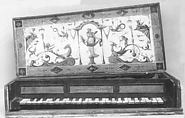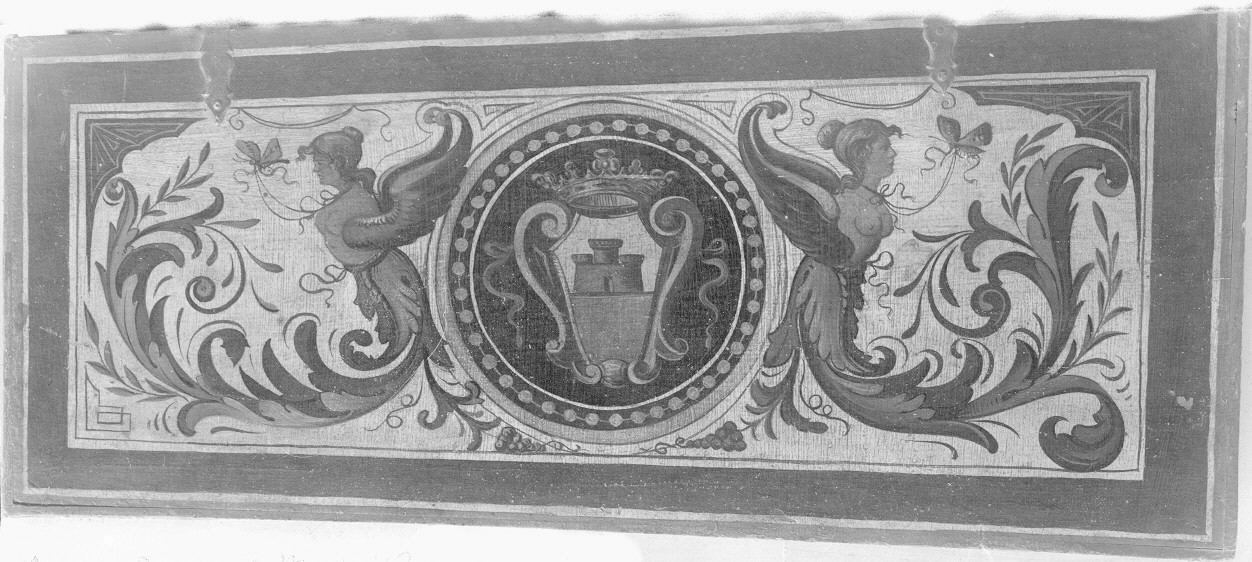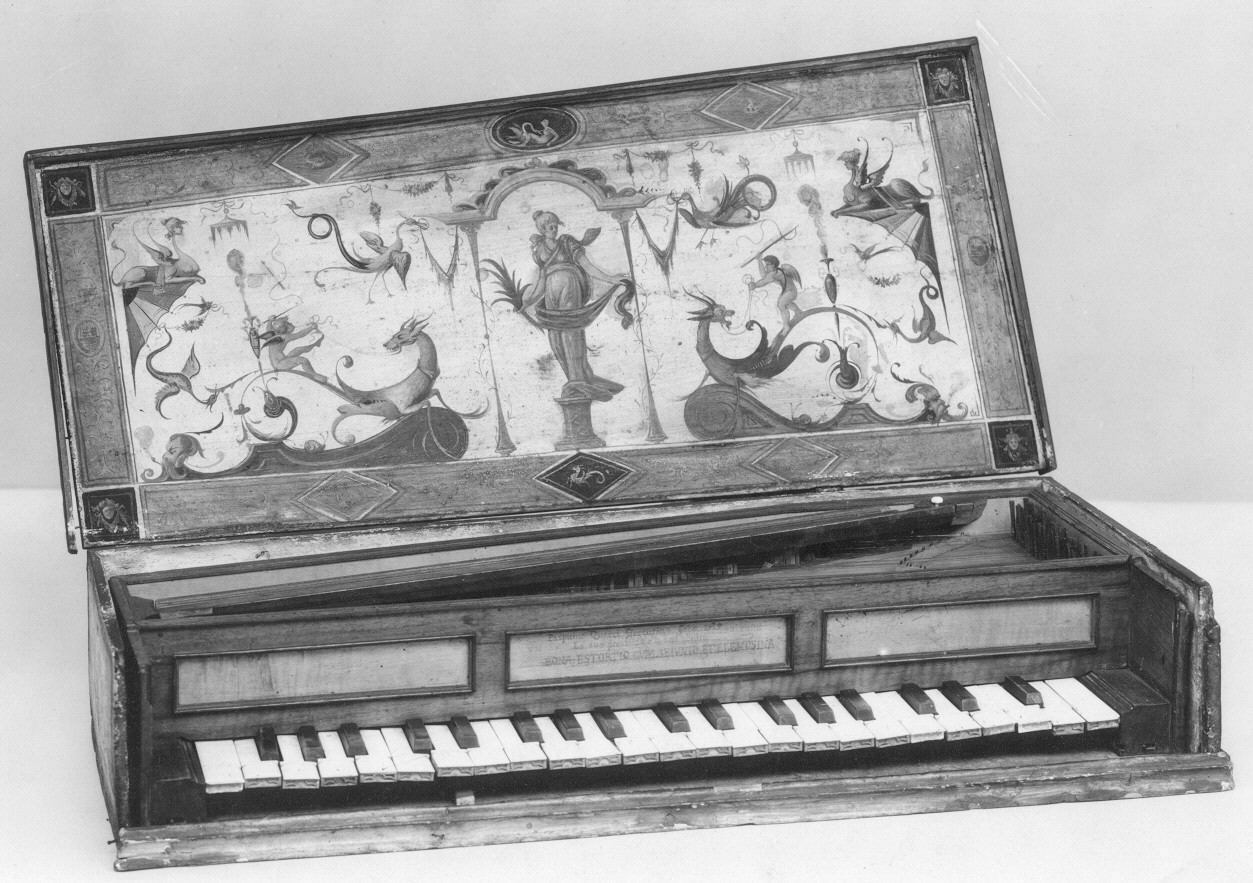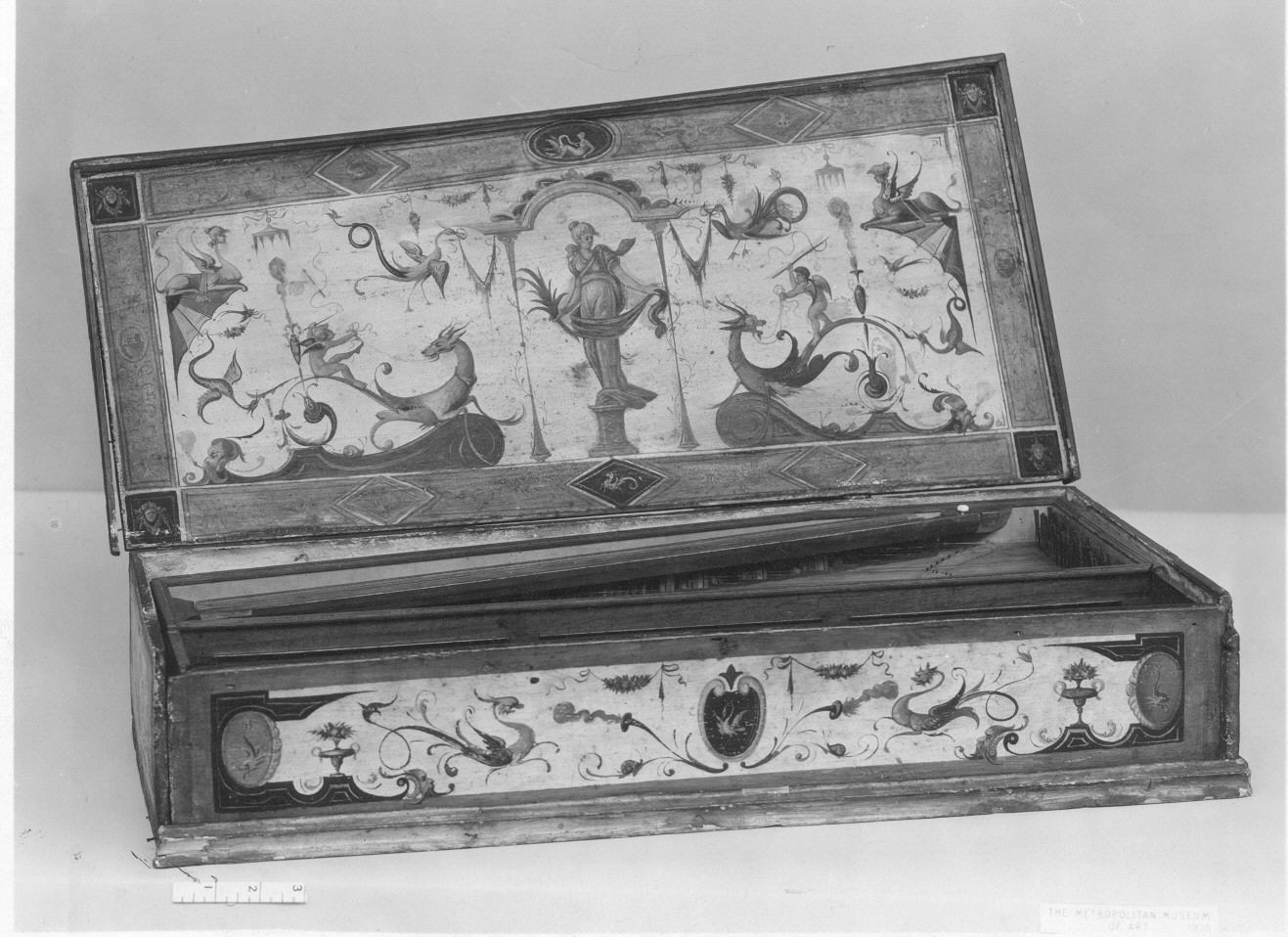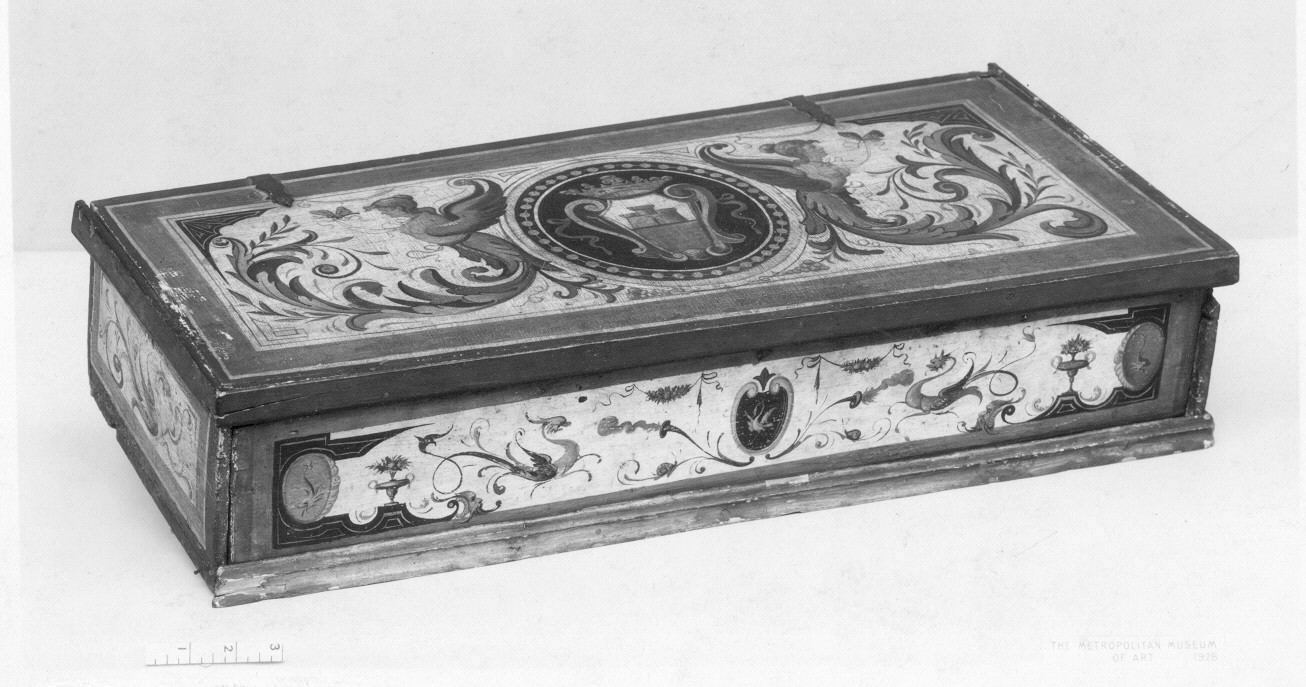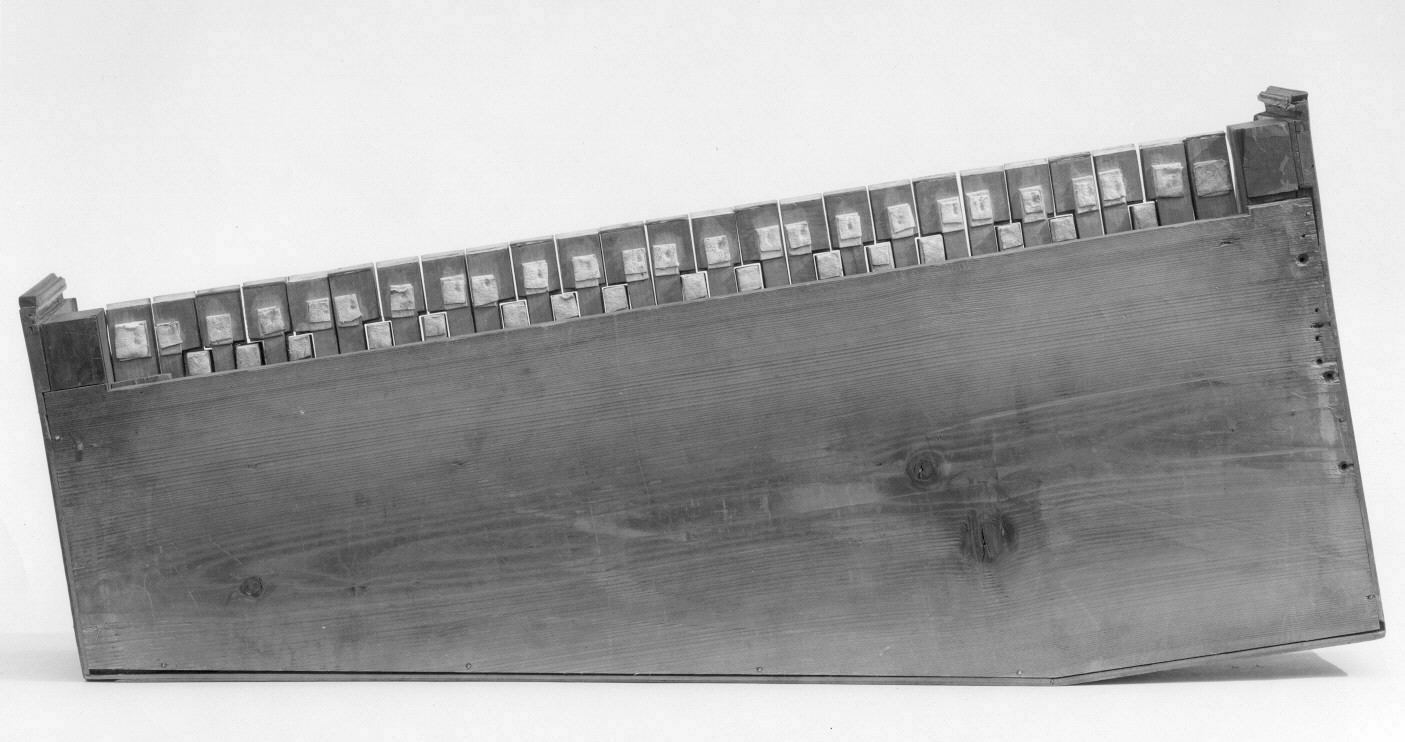Rectangular Octave Virginal
Not on view
This octave virginal is in polygonal form, once part of a claviorganum (combined organ-spinet). It is called an "octave" spinet because its short strings sound an octave or more above normal pitch. An Italian inscription over the keyboard is spurious.
Technical description: Case of walnut or chestnut and lime, left rear corner angled; compass c/e-a3, bone naturals with thin wooden key fronts carved in a trefoil design, accidentals of dark-stained fruitwood, two-rail key frame with overhead dip rail, keys now guided by vertical strips of metal in the rear rack, which fit into slots in the rear ends of the key levers, originally was probably a normal pin and rack system (?); jacks are of pear, with single flag dampers, quill plectra, brass leaf springs, and small lead weights, jacks are guided by punched leather strips glued to the soundboard and lower guide; the soundboard has a pierced wood and parchment rose. (Douglas Maple, 1983)
Due to rights restrictions, this image cannot be enlarged, viewed at full screen, or downloaded.
This artwork is meant to be viewed from right to left. Scroll left to view more.
